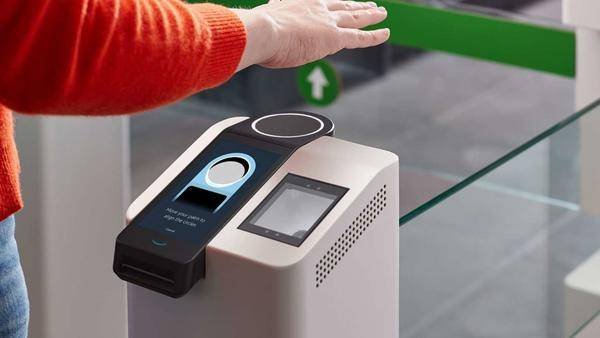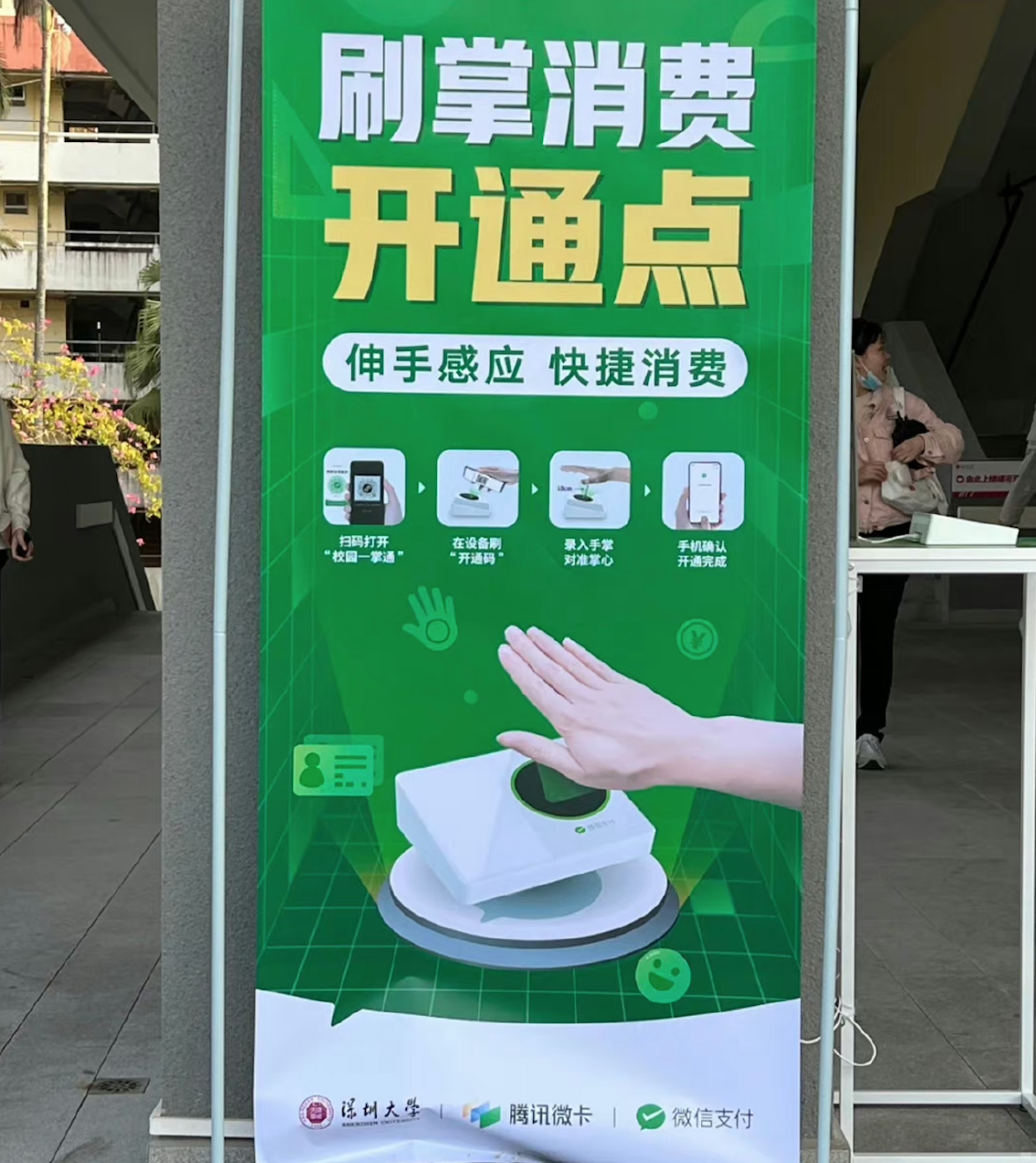WeChat Pay’s palm payment is transforming payment experience in China
In a world where digital innovation is constantly reshaping the way we live, Chinese people are witnessing another groundbreaking advancement in the realm of payments.
WeChat Pay, the popular mobile payment platform operated by Tencent, has introduced a revolutionary service known as "palm payment." This innovative method allows users to complete transactions simply by waving their hand.
In this blog, we will delve into the transformative potential of WeChat's palm payment service and explore how it is revolutionizing the payment experience in China.
WeChat Pay’s palm payment is transforming payment experience in China
In a world where digital innovation is constantly reshaping the way we live, Chinese people are witnessing another groundbreaking advancement in the realm of payments.
WeChat Pay, the popular mobile payment platform operated by Tencent, has introduced a revolutionary service known as "palm payment." This innovative method allows users to complete transactions simply by waving their hand.
In this blog, we will delve into the transformative potential of WeChat's palm payment service and explore how it is revolutionizing the payment experience in China.
What is WeChat Pay’s palm payment?
According to Tencent, WeChat's palm payment service is a result of cutting-edge technology developed by the YouTu artificial intelligence lab, a subsidiary of Tencent. By leveraging surface-level palm prints and vein recognition, the system enables users to make seamless transactions without the need for physical wallets or even smartphones.
How is palm payment used in China?
To use palm payment in China, individuals need to follow these steps:
Identity Verification: Users must have a WeChat account and complete the necessary identity verification process. This typically involves providing personal information and linking a bank account or credit/debit card to the WeChat Pay service.
Palm Registration: Once the identity verification is complete, users can register their palm prints within WeChat Pay. This involves capturing and storing the surface-level palm prints and vein patterns for future authentication.
Payment Process: When making a payment using palm payment, users approach a payment terminal or scanner equipped with palm recognition technology. They place their hand above the scanner, allowing the system to recognize their palm prints and veins for authentication.
Transaction Confirmation: Once the palm print is successfully recognized, the payment terminal will verify the user's identity and process the transaction. The customer typically receives a confirmation message on their WeChat app, indicating the successful completion of the payment.
It's important to note that palm payment is currently available only to residents in mainland China who have completed the required identity verification process. Initially, it was introduced at designated metro stations, but WeChat plans to expand its usage to other locations such as offices, campuses, retail outlets, and restaurants in the future.
Image: Weibo screenshot
Benefits of WeChat Pay’s palm payment method
Implications for Businesses:
Unlocking customer relationship management
For businesses, especially luxury brands targeting Chinese consumers, the adoption of palm payment opens up exciting opportunities. Retail boutiques, for instance, can leverage palm print technology to identify clients, access their transaction history, understand their preferences, and provide hyper-personalized shopping experiences.
Furthermore, palm payment reduces the risk of abandoned transactions due to forgotten wallets or drained smartphones, ensuring a smoother purchasing journey.
To know more information about WeChat Pay, please check our WeChat Pay guide.
Image: WeChat screenshot
Implications for Consumers :
Simplifying Payments with a Wave of the Hand
On the consumer side, by using palm payment, individuals can enjoy a convenient and secure payment experience, eliminating the need for physical wallets or smartphones during transactions.
This exciting development aims to enhance efficiency and simplify the user experience, particularly benefiting elderly individuals and those living with disabilities. It also helps streamline the payment process and provide an additional option for users who prefer biometric identification methods for their financial transactions in China.
With the ability to link palm payment to various services like fitness memberships, cinema tickets, and travel cards, users can enjoy a seamless and integrated payment experience.
The Excitement and Skepticism Surrounding Palm Payment
The introduction of palm payment has generated considerable excitement among Chinese people. Social media platforms, such as Weibo, have been abuzz with discussions on the advantages and potential drawbacks of this novel transaction method.The hashtag #WeChatpalmpaymentrelease has already garnered millions of views and has become a trending topic.
However, as with any new technology, there are skeptics who question the need for yet another biometric identification method. Some users wonder if face scanning, fingerprint recognition, and digital passwords are not already sufficient. Despite these concerns, proponents of palm payment highlight its privacy and speed advantages over other biometric options.
The Future of Payments in China
As the dominant players in China's mobile payment market, WeChat Pay and its rival Alibaba's Alipay are paving the way for the widespread adoption of palm payment. Given their combined market share of over 90%, palm payments are poised to become a fixture in the transaction landscape.
Luxury brands and businesses targeting the younger generation of Chinese consumers must embrace these advancements in payment technology to cater to evolving consumer preferences and ensure a competitive edge.
What does palm payment mean to European merchants?
WeChat Pay will be an even more inseparable part of the Chinese younger generation’s life due to its ease and simplicity. With WeChat Pay's seamless payment process, transactions will be completed in a matter of seconds. This speed and efficiency will not only enhance the overall payment experience but also encourage increased purchase frequency among Chinese consumers.
To leverage these emerging trends, European merchants should proactively prepare themselves for the growing influence of WeChat Pay. This can involve updating their payment systems to accommodate WeChat Pay transactions, integrating WeChat Pay into their online and offline channels.
To know more information about how to choose WeChat Pay and Alipay for your business, read our article about Alipay vs WeChat Pay.
Bottom line:
WeChat's palm payment service represents a significant leap forward in the evolution of payment experiences in China. With the potential to simplify payments, enhance convenience, and enable hyper-personalization, palm payment holds great promise for consumers and businesses alike. As this innovative payment method continues to expand and gain acceptance, it is poised to reshape the future of payments in China and perhaps serve as a model for advancements in the global payments landscape.
About the author: Silkpay
Based in Paris, Silkpay provides omnichannel and secure payment solutions to help physical stores and e-commerce in Europe accept more than 30 of the world's most popular payment methods: Visa, Mastercard, CB, UnionPay, Alipay+, WeChat Pay as well as Asia-Pacific’s major e-wallets.
Silkpay is a winner of the LVMH Innovation Award. The company was also selected as a finalist for the "Money 20/20" Best Startup and in the "MPE Berlin” Startup Awards. Silkpay also won the "Best Fintech" awards from Capgemini and BPCE.
Silkpay helps merchants deliver the smoothest payment experience to their customers. We are a talented and international team driven by a single goal: to improve the customer experience and make payments simple and secure.
Resources:
https://www.sohu.com/a/484118633_565332
https://www.163.com/dy/article/GHK8I3F90511D2JA.html




